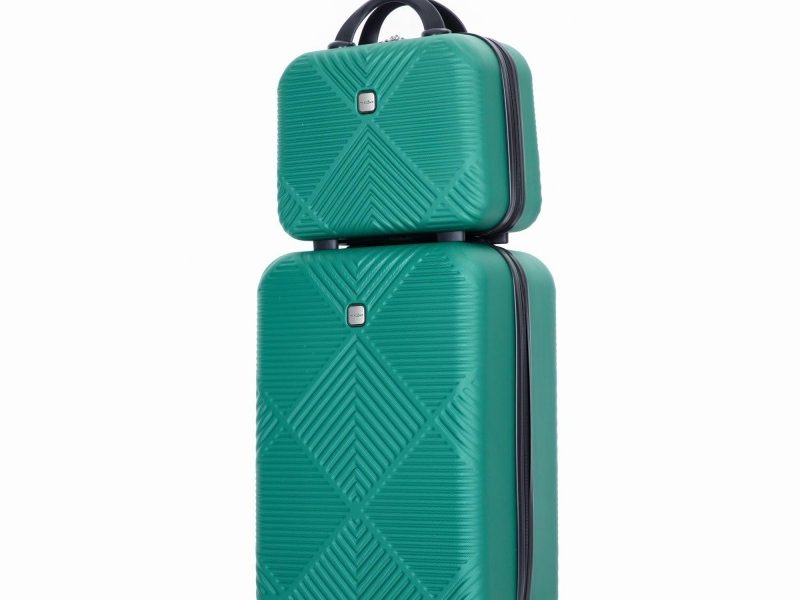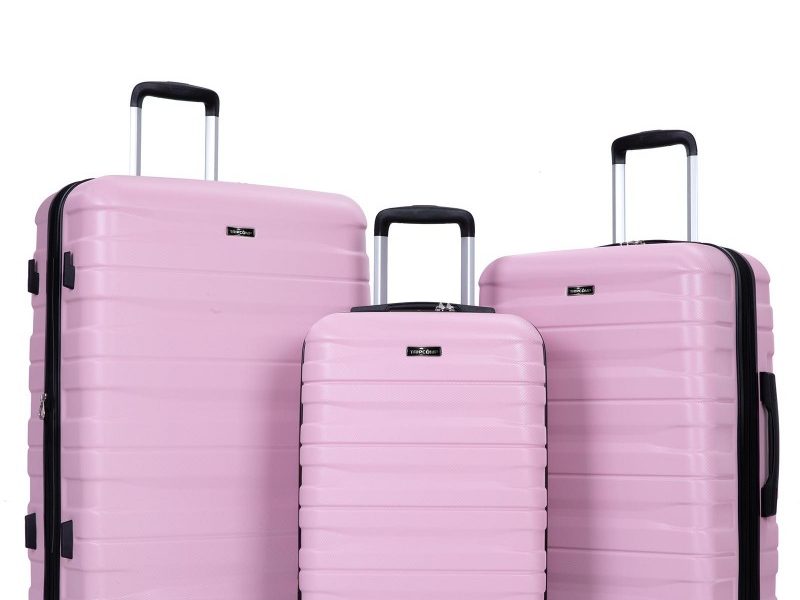Understanding the Crochet Tote Bag: A Beginner’s Guide
Crochet tote bags have become a staple in modern fashion and sustainable living. Unlike traditional tote bags, these handcrafted pieces blend functionality with artistic expression. To start, you’ll need basic crochet skills, a hook, and yarn. The crochet tote bag is ideal for beginners because its simple structure allows for creative customization. For example, experimenting with different stitch patterns (e.g., single crochet, double crochet) can transform a basic design into a unique accessory. Key considerations include choosing the right yarn weight (worsted weight is popular for durability) and hook size (4.0mm to 5.0mm for most projects).
Key Points for Beginners:
- Skill Level: Start with basic stitches like chain, single, and double crochet.
- Yarn Selection: Worsted weight yarn (e.g., Lion Brand Vanna’s Choice) balances softness and strength.
- Hook Sizes: A 4.0mm hook is standard, but adjust based on yarn thickness.
- Pattern Resources: Free patterns on Ravelry often include tutorials for beginners.
Common Mistakes to Avoid:
- Tension Issues: Practice tension control by keeping stitches even.
- Handle Weakness: Use reinforced stitches (e.g., triple crochet) for handles.
- Sizing: Measure your work frequently to avoid over/under crocheting.
Why Crochet Tote Bags Are the Future of Sustainable Fashion
The rise of eco-conscious consumerism has propelled the demand for crochet tote bags. Unlike plastic bags or leather alternatives like suede tote bag, crochet totes are often made from natural, biodegradable materials such as organic cotton or bamboo yarn. This reduces environmental harm and aligns with zero-waste lifestyles. Additionally, handmade crochet bags eliminate the carbon footprint associated with mass production. For instance, a single crochet tote bag can replace hundreds of plastic bags, making it a practical and ethical choice.
Environmental Impact Data:
- Plastic bags take 500+ years to decompose.
- Crochet yarn made from recycled materials (e.g., Patons Recycled Cotton) reduces landfill waste.
- Handmade production cuts carbon emissions by 30–50% compared to factory-made bags.
Case Study:
A 2025 study by the Sustainable Fashion Institute found that 78% of consumers prefer eco-friendly totes over leather alternatives. Brands like “EcoCraft Co.” have seen a 40% sales increase by promoting crochet tote bags as sustainable alternatives.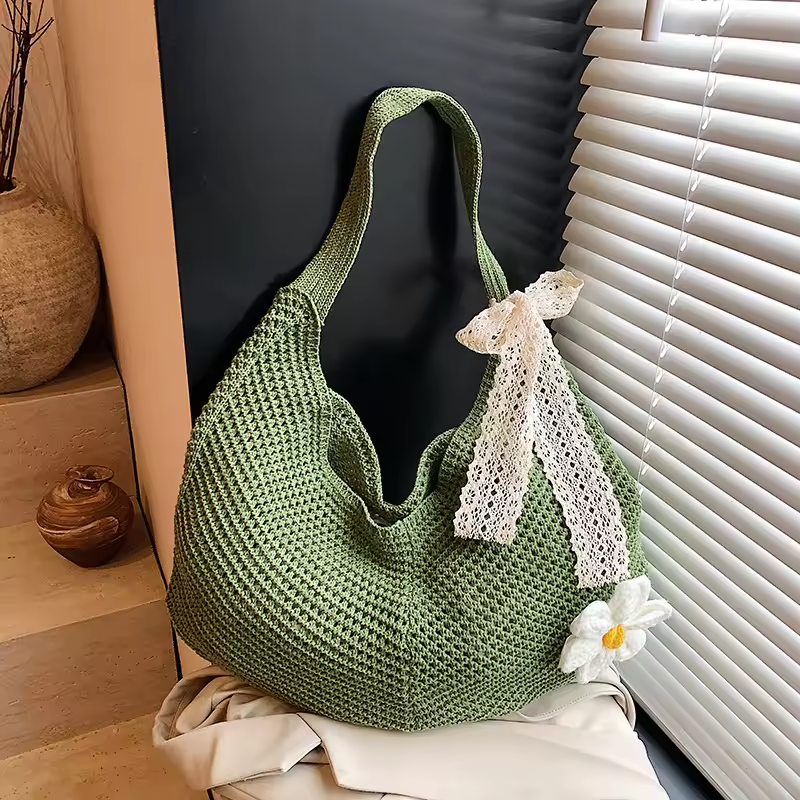
Designing Your Perfect Crochet Tote Bag: Pattern Selection
Choosing the right pattern is crucial. Beginners should start with simple designs like the “Basic Rectangular Tote” or “Drawstring Crochet Tote.” More advanced crafters can explore intricate patterns such as the “Floral Motif Tote” or “Geometric Texture Tote.” Online platforms like Ravelry and Etsy offer free and paid patterns, often categorized by skill level. For example, the “Beginner-Friendly Market Tote” uses only single and double stitches, while the “3D Lace Tote” requires knowledge of advanced techniques like filet crochet.
Pattern Categorization by Skill Level:
- Beginner: “Grid Stitch Tote” (simple repeats).
- Intermediate: “Shell Stitch Tote” (combines single/double crochet).
- Advanced: “Filet Crochet Tote” (requires chart reading).
Pattern Customization Tips:
- Color Blocking: Alternate yarn colors in rows for a bold look.
- Stitch Combos: Mix textured stitches (e.g., popcorn stitch) with plain rows.
- Size Adjustments: Increase/decrease chains to create mini or maxi totes.
Materials Matter: Choosing the Best Yarn for Your Crochet Tote Bag
Yarn choice directly impacts the bag’s durability and aesthetics. Cotton yarn is lightweight and machine-washable, making it ideal for everyday use. Wool blends add texture but may require hand-washing. For a luxurious feel, silk blends or bamboo yarn create a silky finish. Ethical sourcing is also vital—opt for brands that use recycled materials or support fair-trade practices. For instance, “Eco-Yarn Co.” offers certified organic cotton yarns that are OEKO-TEX certified, ensuring safety for both the environment and users.
Yarn Types and Their Uses:
- Cotton: Best for durability and washability.
- Wool: Ideal for winter totes (insulates contents).
- Bamboo: Soft, eco-friendly, and moisture-wicking.
- Recycled Polyester: Made from plastic bottles; eco-conscious but less breathable.
Testing Yarn Quality:
- Tensile Strength: Pull yarn strands to check resistance to fraying.
- Colorfastness: Wash swatches to ensure colors don’t bleed.
- Texture: Opt for smooth yarns for clean lines; textured yarns for rustic looks.
Step-by-Step Tutorial: Crafting a Classic Crochet Tote Bag
Let’s walk through a basic crochet tote bag project:
Materials Needed:
- Worsted weight yarn (500g for a medium tote).
- Size 4.0mm crochet hook.
- Yarn needle, scissors, stitch markers.
1: Chain Foundation
- Chain 60 stitches. This creates the base for the bag’s width.
- Adjust chain length: Add/subtract 5 stitches per side for a wider/narrower bag.
2: Body Construction
- Row 1: Double crochet in 2nd chain from hook, then 1 dc in each chain.
- Rows 2–20: Continue dc stitches. Use stitch markers to track rows.
3: Handles
- Chain 30 stitches for each handle.
- Sew handles to the top of the bag using whipstitch.
4: Finishing Touches
- Add a single crochet border around the top and bottom edges for reinforcement.
- Weave in loose ends and block the tote to even out stitches.
Troubleshooting Tips:
- Sagging Handles: Use thicker yarn or add a second handle layer.
- Uneven Edges: Use a row counter to ensure consistent stitch counts.

Troubleshooting Common Crochet Tote Bag Issues
Crochet tote bags often present challenges that can frustrate even seasoned crafters. Let’s delve into common issues and their solutions in detail:
Uneven Stitches
Uneven stitches can make a bag look amateurish. This often occurs due to inconsistent tension or miscounted stitches.
- Solution:
- Tension Control: Hold the yarn loosely between your fingers and the hook. Practice by crocheting a tension swatch before starting.
- Stitch Count Verification: Use stitch markers to divide rows into sections. For example, place a marker every 10 stitches to ensure accurate counts.
- Hook Adjustment: Switch to a smaller hook if stitches are too loose, or a larger one if they’re too tight.
Sagging Handles
Handles that droop under weight can ruin a bag’s aesthetics and functionality.
- Solution:
- Material Reinforcement: Use a thicker yarn (e.g., bulky weight) for handles.
- Double Crochet Layers: Crochet two separate handle strips and sew them together for added strength.
- Lining Reinforcement: Add a fabric strip (e.g., denim) inside the handle loops for extra support.
Unbalanced Bag Shape
A bag may lean to one side or have uneven sides due to inconsistent tension.
- Solution:
- Symmetry Check: After completing each row, lay the bag flat to ensure both sides match.
- Row Count Tracking: Use a row counter or a small notebook to log completed rows.
- Foundation Chain Adjustment: Recalculate the foundation chain length if the bag is too wide or narrow.
Advanced Fix: Lining Integration
Adding a lining not only improves durability but also hides imperfections.
- Steps:
- Crochet a matching-sized lining using lightweight fabric or cotton.
- Sew the lining to the tote’s inner seams using a whipstitch.
- Reinforce the corners with a double layer of fabric for added structure.
Customizing Your Tote Bag: Embellishments and Accessories
Transform your crochet tote bag into a personalized masterpiece with these detailed customization techniques:
1: Embroidery & Monograms
Embroidery adds a touch of elegance.
- Tools Needed: Embroidery floss, needle, and a hoop.
- Steps:
- Sketch your design (e.g., initials, flowers) on paper.
- Transfer the design to the bag using a disappearing ink pen.
- Use backstitch for clean lines or French knots for textured details.
2: Beaded Weaving
Add sparkle with beads.
- Materials: Seed beads, size 10 or 12.
- Steps:
- Thread beads onto your crochet yarn before stitching.
- Place beads in strategic locations (e.g., along handle seams).
- For a gradient effect, alternate bead colors in rows.
3: Fabric Patches & Appliqué
Repurpose old fabrics for a rustic look.
- Steps:
- Cut fabric patches (e.g., denim, lace) into desired shapes.
- Use a glue gun or fabric adhesive to attach them to the tote.
- Sew around the edges with a contrasting thread for a finished look.
Advanced Idea: 3D Embellishments
Create raised designs using yarn or felt.
- Example:
- Crochet small flowers separately and sew them onto the tote’s surface.
- Use felt shapes (e.g., stars, hearts) and secure them with embroidery thread.
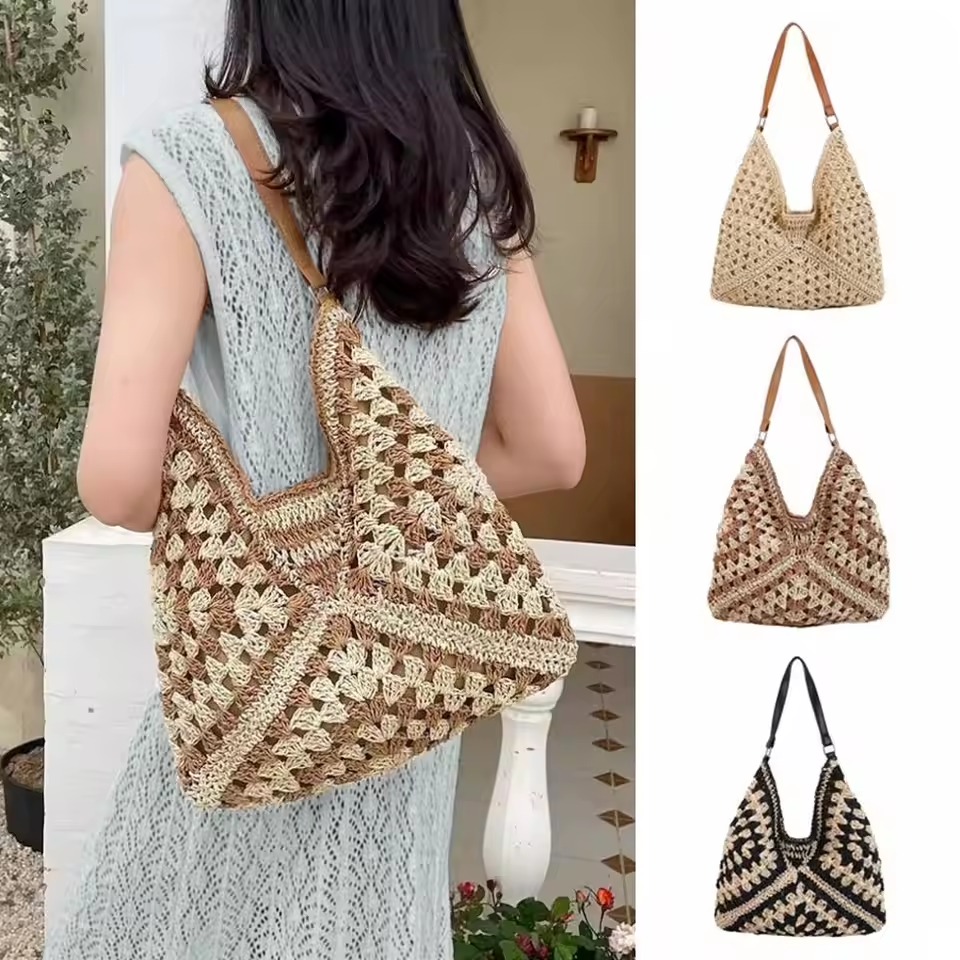
Crochet Tote Bags as Gifts: Personalized and Meaningful Presents
Handmade crochet tote bags make unforgettable gifts. Here’s how to personalize them effectively:
1: Monogrammed Totes
- Steps:
- Use a monogramming font (e.g., “ABC” for a couple’s initials).
- Embroider the initials in a contrasting color (e.g., gold thread on navy yarn).
- Add a gift tag with a handwritten note: “For my favorite adventurer!”
2: Themed Totes
- Holiday Gifts:
- Christmas: Use red/green yarn and add a tiny crocheted snowflake.
- Valentine’s Day: Incorporate heart-shaped appliqués and pink beads.
- Birthdays:
- Crochet a pocket and fill it with a gift card or chocolates.
3: Customizable Functionality
- Add Pockets: Sew small pockets to the exterior for keys or phones.
- Adjustable Straps: Use a toggle clasp to vary handle length.
Selling Your Crochet Tote Bags: Tips for Success
Transform your craft into a profitable venture with these actionable strategies:
1: Pricing Strategy
- Cost Calculation:
- Material cost: $15 (yarn + hook).
- Labor time: 8 hours × 15/hour=120.
- Discounts: Offer 10% off for bulk orders (e.g., 3+ bags).
2: Platform Selection
- Etsy:
- Use keywords like “handmade eco-friendly crochet tote bag” in titles.
- Add high-resolution photos from multiple angles.
- Local Markets:
- Set up a booth at farmers’ markets or craft fairs.
- Offer free tote customization (e.g., monogramming) to attract buyers.
3: Marketing Hacks
- Social Media:
- Post “progress stories” on Instagram showing the creation process.
- Use hashtags like #EcoFriendlyTote and #HandmadeGoods.
- Collaborations: Partner with eco-influencers for sponsored posts.
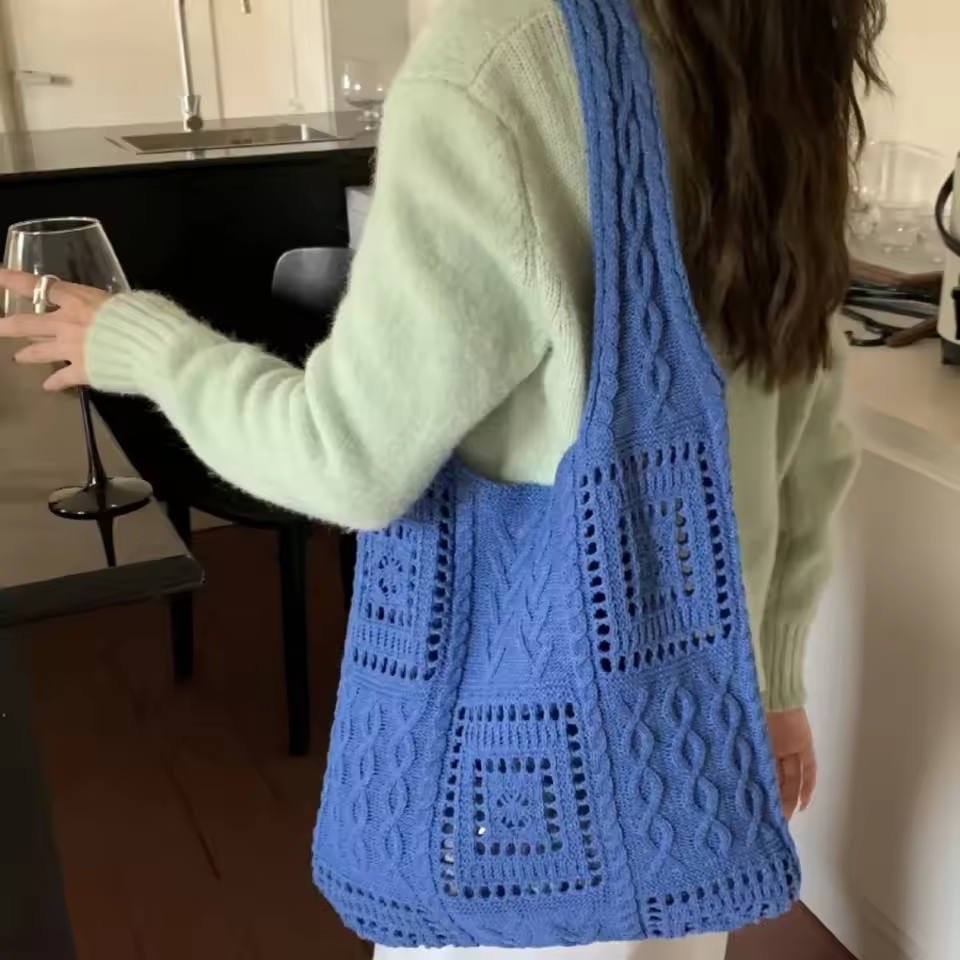
The Future of Crochet Tote Bags: Trends and Innovations
The craft world is evolving rapidly. Here’s a deep dive into emerging trends:
1: Smart Fabrics
- Innovation: Yarns infused with UV protection or moisture-wicking technology.
- Example:
- “CoolMax Cotton” yarn keeps contents cool in summer.
- UV-blocking yarns protect skincare products from sunlight.
2: AI-Generated Patterns
- Tools: Apps like CrochetGen AI let users input preferences (e.g., “boho style”) and generate custom patterns.
- Process:
- Upload a photo of your desired design.
- The app generates a step-by-step guide.
- Adjust stitch counts via the app’s interface.
3: Upcycled Materials
- Methods:
- Repurpose old sweaters into yarn using a “drop spindle.”
- Use fabric scraps from thrifted clothing for appliqué.
- Benefits: Reduces waste and adds unique textures.
4: Collaborations with Tech Brands
- Example:
- A partnership with a solar-powered dye company to create color-changing yarns.
- QR codes sewn into bags linking to sustainability impact reports.
